Free To Air (FTA) dishes receive unencrypted television or radio broadcast signals. They can decode standard MPEG-2/DVB-S for digital television. FTA receivers are designed to detect active transponders and their channels without being pre-programmed thereby collecting any available information they can detect. With the use of these receivers, television viewers can receive transmissions without subscription. FTA dishes usually come with a LNBF, which is a LNB (Low-Noise Block) integrated with a feedhorn. The feed horn channels the signals between the transceiver and the reflector, while the LNB converts signals from Read More
DVB (Digital Video Broadcast)
DVB (Digital Video Broadcast) is a set of standards for the digital transmission of video and audio streams, and also data transmission. The DVB standards are maintained by the DVB Project, which is an industry-led consortium of over 260 broadcasters, manufacturers, network operators, software developers, regulatory bodies and others in over 35 countries. DVB standards are available on the web at the ETSI Publications Download Area. DVB has been implemented over satellite (DVB-S, DVB-S2), cable (DVB-C), terrestrial broadcasting (DVB-T), and handheld terminals (DVB-H). DVB utilizes MPEG-2 compression. DVB primarily uses Read More
Free to Air Channels
Free-To-Air, or FTA, channels are satellite television channels that are not encrypted and are, therefore, available to anyone who is able to receive them. FTA channels are not provided by premium satellite companies, but rather open source satellite providers, such as Galaxy, AMC, and Telstar. FTA channels require subscribers to have a 30-inch satellite dish or larger, but do not require the user to pay any monthly fees or access charges. FTA channels are available from a variety of different satellites around the world, but may change in terms of Read More
Digital Video Recorder (DVR)
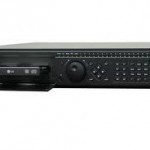
A DVR, which is also known as a Personal Video Recorder (PVR) is basically a digital replacement for the video cassette recorder (VCR) for recording TV programs. The key difference between a VCR and a DVR is that the latter can record TV programs digitally. Apart from the advent of High Definition TV (HDTV), the rise of the Digital Video Recorder (DVR) is considered a major development in television technology. Key Benefits of Using DVR Live TV can be paused and continued, since DVRs automatically record about an hour of Read More
DirecTV SWM
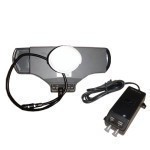
The DirecTV Single Wire Multiswitch (SWM) is a specially designed piece of hardware that allows a DirecTV satellite dish signal to be split and used with many different tuners/receivers. The usual configurations allow 5, 8, 16, or 32 connections to a single satellite dish. DirecTV SWM is useful because of the satellite dish’s previous configurations, where lines were run to the household or location. The satellite dish had to send out a dedicated line that would power a single tuner/receiver. If a DVR was used, two dedicated lines would have Read More
SuperDISH
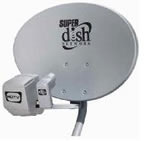
A SuperDISH is a 36″ inch x 20″ inch oval satellite dish used by Dish Networks. It is able to receive signals from three satellite locations. It was installed by Dish Networks in November 2003 as a way to offer additional channels to its subscribers. The SuperDISH replaced the earlier Dish 500, which was only able to receive a signal from two satellite locations. The SuperDISH comes is available in two models: The 105 SuperDISH is pointed to receive signals from Dish Network satellites at 105, 110, and 119 degrees Read More
Dual LNB
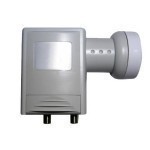
A dual LNB (Low Noise Block-Down Converter) is an LNB system that features two outputs rather than one and allows satellite television subscribers to watch multiple channels on separate television sets simultaneously. Dual LNB systems use only one parabolic satellite dish, but have two cable connections that are connected to separate televisions in the user’s house. When the LNB collects television signals, it splits them into two equal signals that each television receives at the same time. Like dual LNB systems, triple and quadruple LNB systems are also available. How Read More
How is a Satellite System Connected to a Television Set
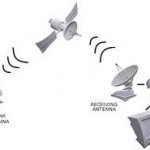
Television has had a foothold in our society for decades and while many people still get their TV from cable companies, others are switching to satellite TV. Satellite TV provides customers with several important features that they cannot get from cable companies, the most important being the fact that satellite TV can provide television access to anywhere in the world while cable companies are limited to areas that they can run cables through. In this article, we will explore how satellite TV works so that you can understand what satellite Read More
How to Make Satellite Dish LNB Adjustments
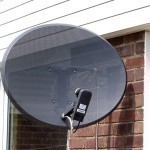
LNB (Low Noise Block) is the receiving end of a satellite dish. The LNB must be pointing directly to the satellite overhead in orbit to receive the strongest and clearest signal. There are many types of satellite dishes available, some of them are installed in a fixed position, others are installed so that they can move regularly. The type of satellite that the user would like to receive signals from usually determines this. As with a normal TV antenna, it may be required for the user to adjust the LNB Read More
Satellite Receivers
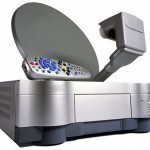
Satellite receivers come in standard, HD tuners, DVR, or FTA formats. In a standard receiver, the digital broadcast signal is decoded and presented in the television in an analog format. Most satellite receivers feature an Electronic Program Guide (EPG), which contains a list of the available channels and programming. HD Receivers Made for high-definition satellites signals, an HD receiver presents these signals to high-definition televisions (HDTVs) or HD-ready televisions in their default widescreen digital format. It can also broadcast audio signals in Dolby Digital format, aside from high-definition signal and Read More


Share on: